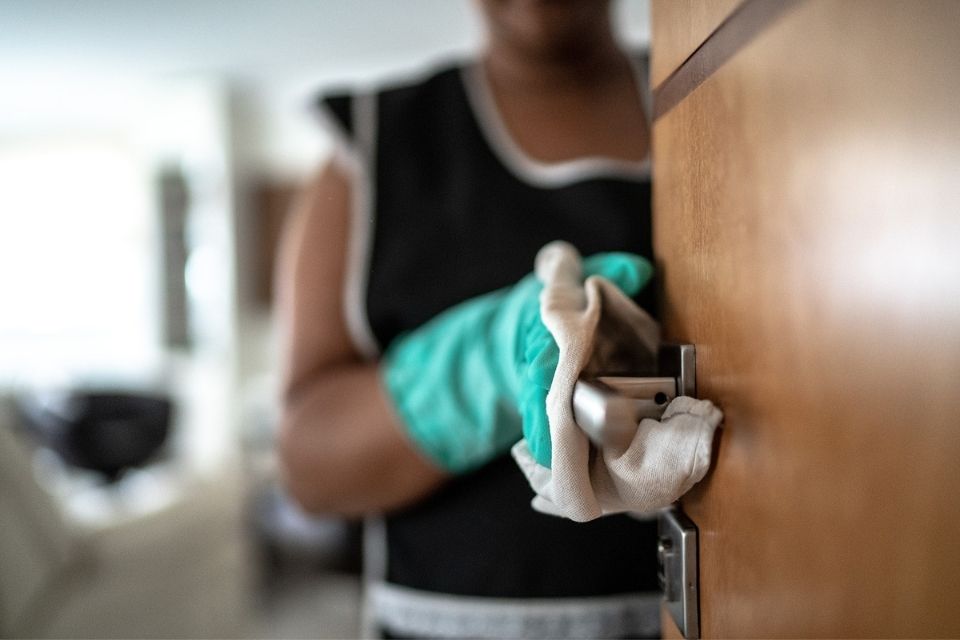“A caregiver with children told me (recently) she has permanently left her home care worker job because child care is more expensive than the $10 per hour she earned. And she accrued no fringe benefits. In Bernalillo [New Mexico], where our organization is based, the nearest McDonald’s franchise advertises starting pay at $11 per hour. They offer vacation and sick leave, full paid four-year college tuition, and access to such discounts as moving vans and rental cars to move one’s family to Bernalillo. I, too, would take that job over one paying $10 per hour with no benefits.”

President and CEO
New Mexico Caregivers Coalition
We asked Adrienne about her reactions to the seminar we hosted on October 21, 2021. The seminar was part of the Towards an Inclusive Recovery series. The Federal Reserve Banks of Dallas and Kansas City organized the event to discuss the origins of the “she-cession” and its implications for the future. It was also important to us to highlight the experiences of women facing the most barriers in the economy: women of color, single mothers, and low-income women.
Service jobs and women’s losses
During the first panel, experts on women and the labor market discussed women’s employment trends before and during the pandemic. They noted that the pandemic’s unequal effect on women was largely due to the types of jobs women held. Women, especially women of color, made up much of the service sector. Because the pandemic hit the service sector hardest, women bore most of the job losses.
Adrienne connected this directly to her work in the caregiving sector. “I’d point to [panelist] Michelle Holder’s comments in particular,” said Adrienne. “Half of all Black women work in just four undervalued, under-respected jobs in the US as a result of occupational segregation. Her research also showed that health care jobs are down 500,000 since last February, and nursing and residential care facilities account for four-fifths of the loss.”
Quitting out of necessity
Women not only lost more jobs but were also more likely to quit their jobs during the pandemic. The second panel discussed the pandemic’s effect on mothers, including the impact of child care and school shutdowns. These disruptions led to many mothers leaving their jobs. This was especially true for single mothers. Speakers also pointed out the unstable nature of the child care industry. They offered policy solutions for the challenges of both child care providers and working mothers.

The Brookings Institution’s Lauren Bauer presents her research on mothers’ labor force participation during the pandemic. Toward an Inclusive Recovery: Understanding and Empowering Women’s Economic Participation, a Federal Reserve Community Development Research Seminar presented by the Federal Reserve Banks of Dallas and Kansas City, October 21, 2021.
Adrienne noted that New Mexico acted fast to address child care shortages. “Our state responded quickly,” she said. “Today, the Department of Public Safety is partnering with our state’s Early Childhood Education Department to provide expedited background checks so that child care centers can hire new, temporary employees at child care centers as we continue to recover from the pandemic. Mothers of young children who want to go back to work cannot do so unless and until they have child care, even if they do have a partner to help care for their children.”
Culture’s influence on women’s employment
Finally, both panels stressed the importance of culture and values. There is still a cultural expectation that women do more household work than men. That expectation exists regardless of income. Employers also tend to react poorly when women’s family life affects their paid work. This became apparent during the pandemic. “I really identified with [panelist] Betsey Stevenson’s statement about how families were kept ‘in the background’ during the COVID-19 pandemic,” said Adrienne. “Almost as though caregivers’ own families did not exist.” Speakers noted that policies and culture influence workers’ ability to fully participate in the economy. They were hopeful that positive changes were possible on both fronts.
After watching the seminar, Adrienne felt empowered to use what she learned. “I left the event armed with new data that I will share in conversations with business and community leaders in New Mexico to more strongly advocate for caregivers,” she remarked. “I especially love seeing the many ways that the Federal Reserve is showcasing conversations on race and gender equity. I tell my colleagues that the Fed is the place to look for new ideas, solid data, and people who can interpret that data.”
In case you missed it, watch the full seminar on demand.











